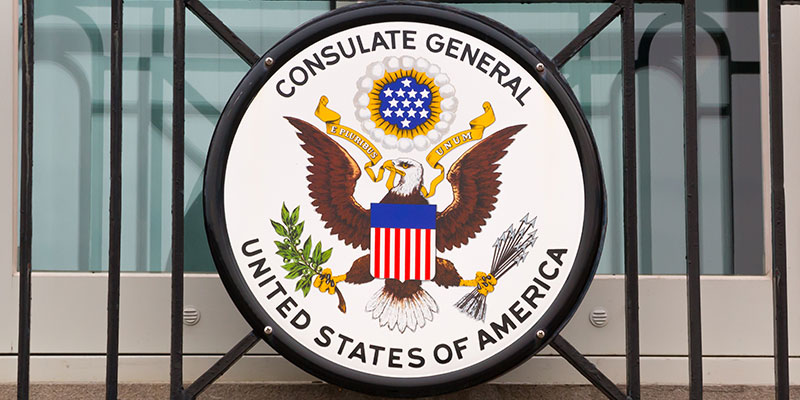
In this article, you will find the following details:
We recommend you familiarize yourself with the H-1B visa before we explore the HB1 Consular Processing Versus Change of Status.
It is well-known that H1B is one of the most popular visa types used by thousands of foreign applicants who want to work and live in the US. The H1B is issued by the United States Citizenship and Immigration Services (USCIS), and it is a temporary, non-immigrant visa that comes with many benefits.
According to the USCIS regulations, H1B employers who hire foreigners are responsible for sponsoring and submitting the H1B visa petitions on behalf of their employees. Depending on where the applicant is at the time of filing and based on their preference, the employer will file the petition as a Change of Status or Consular Processing petition.
The applicant needs to go to the US Consulate to get a US Visa Stamp on their passport in the consular process. You can use the visa stamp to enter the US and get the visa status you want. Sometimes, you may require USCIS approval for some of the visas. Consular Processing has the following steps:
The Change of Status or COS is changing the current visa status to another status while remaining in the US. All visa types are not eligible for COS. Here are some of the visas that are not eligible for COS:
Although it is your employer's responsibility to apply for COS or H1B Consular Process, you ought to know how these processes differ and how they can impact your H1B visa status. Our next segment deals with the main differences between the COS and Consular Processing.
1. Prove visa status and documentation
For COS: To apply for COS, you must prove that you maintained your visa status while staying in the US. The process may sometimes be tricky with unemployment days, F1 OPT, and other evaluation forms.
For Consular Processing: If you are in the US and have applied for H1B through Consular Processing, you need not provide evidence of your maintaining your status. Also, you do not have to provide extensive documentation to prove you have maintained the same.
2. Your Job
For COS: If you apply for a COS while in the US, you can commence working right away from October 1st or whenever your petition is approved after the same date.
For Consular Processing: You can work only if you have visa stamping, and for that, you need to arrange for your visa stamping appointment. You may face delays in finding the right date for visa stamping.
3. Travel Restrictions
For COS: Travel restrictions are one of the biggest disadvantages of Change of Status, especially if the petition is pending with the USCIS. It is highly recommended that you not travel while awaiting your COS approval from the USCIS. Moreover, the process can take months if the USCIS does not offer Premium Processing within the first few months of the H1B season or if your employer refuses to apply. Such circumstances can be quite challenging, especially if you have to travel for emergency reasons.
For Consular Processing: There are no travel restrictions whatsoever.
4. Visa Stamping
For COS: There is no need to go for visa stamping to the Consulate or risk getting a 221G for administrative processing.
For Consular Processing:
If you apply for Consular H1B while in the USA, you have to leave the country and get the visa stamping done either in your home country or in Canada or Mexico. There are many challenges in acquiring the visa stamping, as it is mandatory. You need to face the visa interview and endure extra scrutiny and processing.
Also Read: Change of Status H1b
Choosing between COS and Consular Processing entirely depends on your H1B status and your current circumstances.
You can file H1B Transfer Consular Processing if you:
On the other hand, you can file your Change of Status if you:
Understanding H1B processes can be quite challenging, especially for first-timers. For more information about the H1B visa, visit the TechFetch H1B website.
**Disclaimer: All H1B processes are subject to change. Hence, kindly refer to the official USCIS website for the latest information.